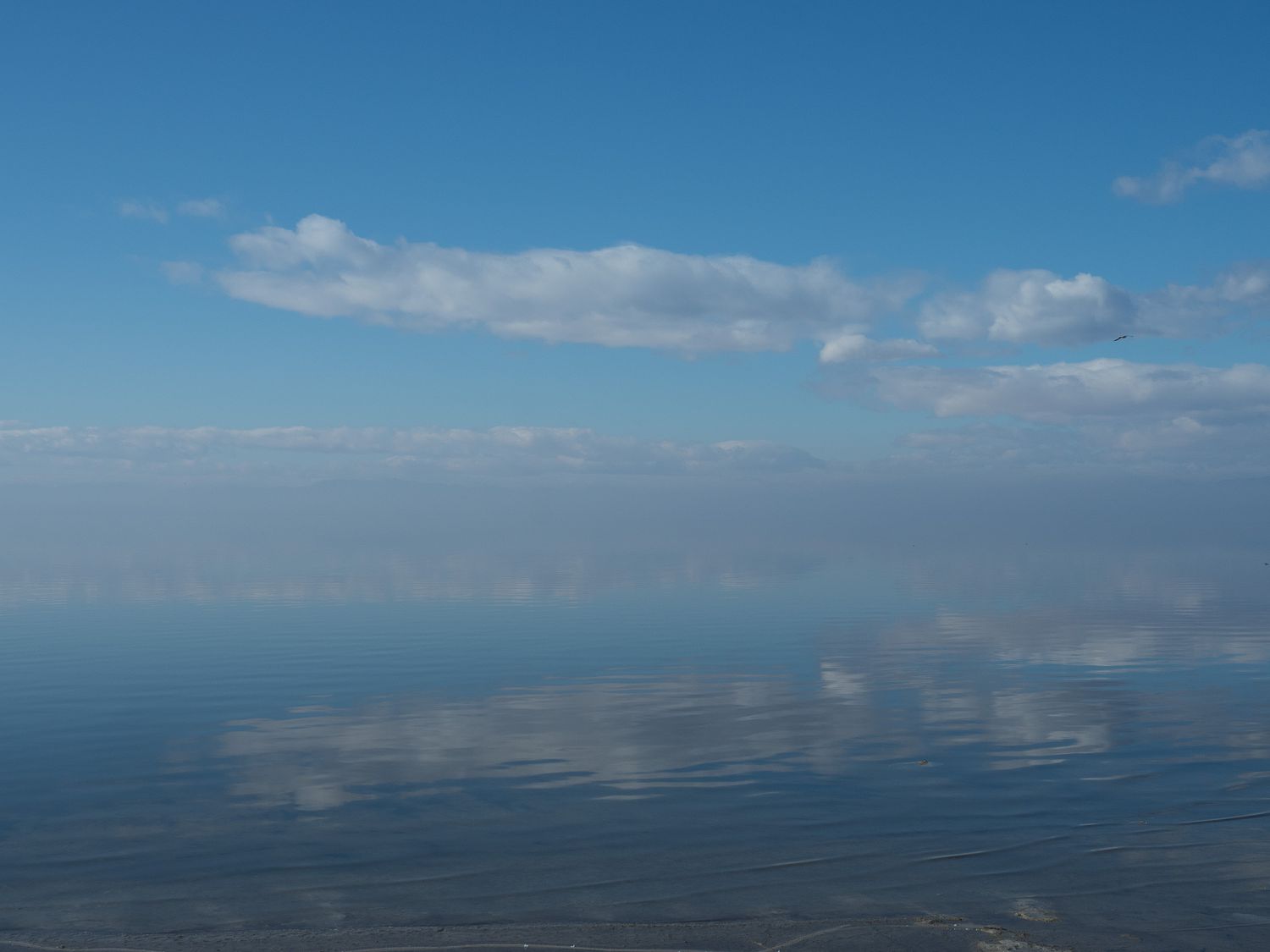– Indio, California to Tucson, Arizona –
Indio is an interesting place. It is filled with snowbirds in RVs and trailer houses this time of year. I guess I should define the term snowbird, in case you’ve never spotted one for yourself. A ‘snowbird’ is a person, typically a retiree, who spends the hot summer months in a cool northern locale, say Maine, and then moves south during the cold winter months, when it would be snowy in their regular home, to a place like Florida. It seems like the most popular states are Arizona and southern California, which tend to have very pleasant and mild winters. Whole communities of snowbirds fill this area during the winter. It’s pretty funny, honestly.
I bring this up because Mark and I parked the car at a golf resort in the middle of a snowbird community to take little Ripley for her run this morning. The sidewalks were so nicely paved and the roadsides were so wide that we couldn’t resist. They’ve got to keep the neighborhood nice for the retirees. We were the youngest people for miles, I think. The only problem with our intended running spot was the sun. Even the groundskeepers of the retiree playground couldn’t get real trees to grow along the sidewalk in this desert. Regardless, we had a nice run, and we only attracted a few stares from the golf resort’s cane-wielding patrons. “Darn kids and their real knees!”
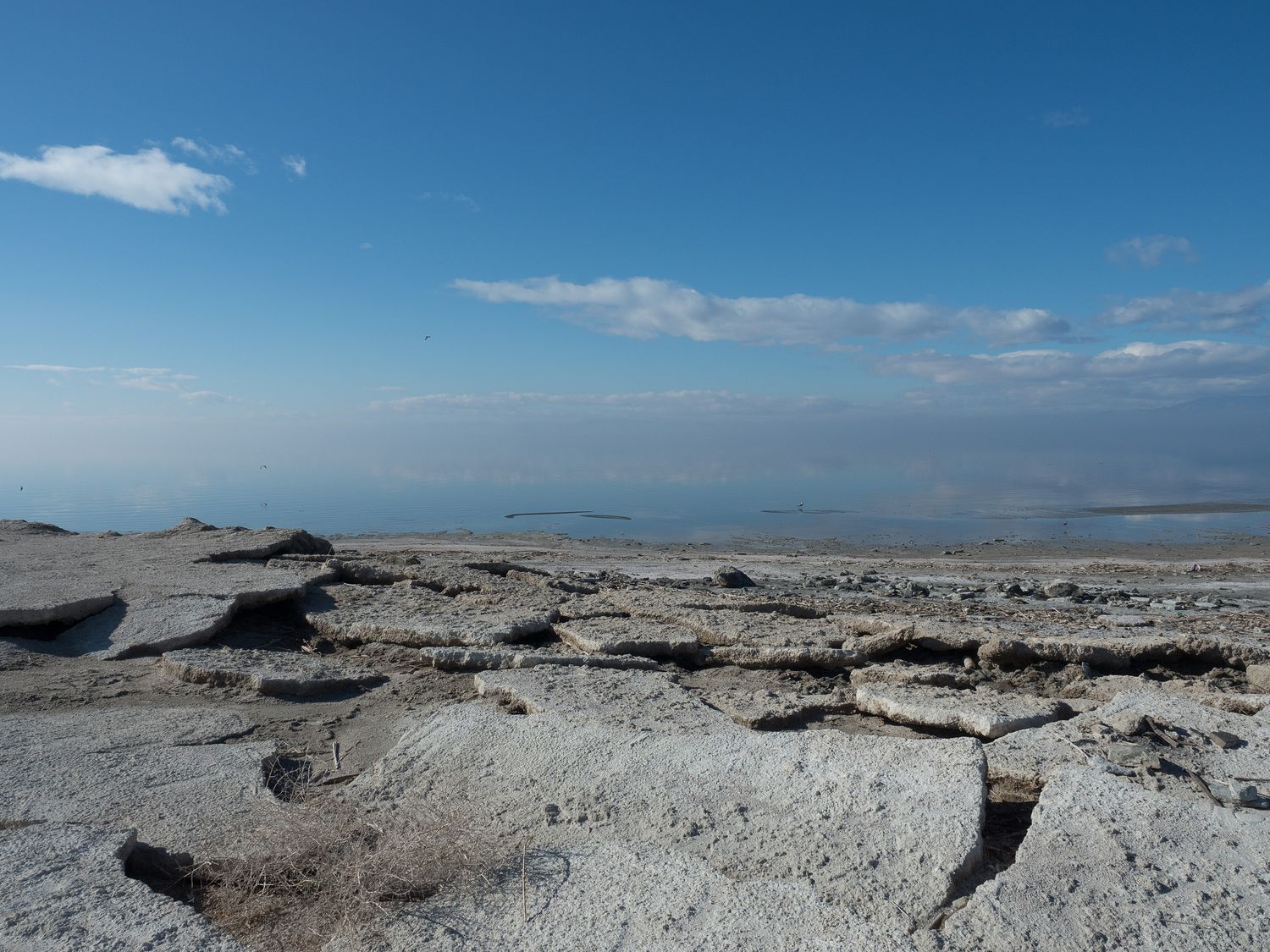
Today was scheduled to be an unusual sort of day for my parents, who aren’t always interested in some of the weirder stuff we like to see. It turned out okay in the end. We had the free breakfast from our hotel and were on the road reasonably early, with plans to stop in several places Mark and I have been before. Today was like a tiny cultural tourism day. Our first stop was at the Salton Sea.
The Salton Sea is an enormous (343 square mile) accident in the middle of the desert. This area of the Imperial and Coachella Valleys used to be covered by a much larger inland sea, long before we were around to see it. Later, the sea dried up, smaller lakes formed, then they dried up again. Most recently the water found here was put here accidentally. Engineers trying to build irrigation canals from the Colorado River through the dry lake bed made a mistake, filling the canals with silt. Once the canals could no longer hold the water, it spilled out into what was then called the Salton Sink for two years before they were able to sufficiently correct the problem. With no way for the water to drain out, the Salton Sea was formed.
The area is interesting because, from Wikipedia, “its surface is 234 feet below sea level. The deepest point of the sea is 5 feet higher than the lowest point of Death Valley.” During the summer, the lake’s temperature can reach 95ºF, despite its maximum depth of 43 feet. In addition, because of its lack of drainage and location over ancient salt beds, the lake is saltier than the Pacific Ocean. The salinity is increasing, as water doesn’t not flow into it as often as it used to with the drought, and many of the fish that used to live in the lake have died. Some still exist, but water levels are falling, as well. Some day, it will probably be gone.
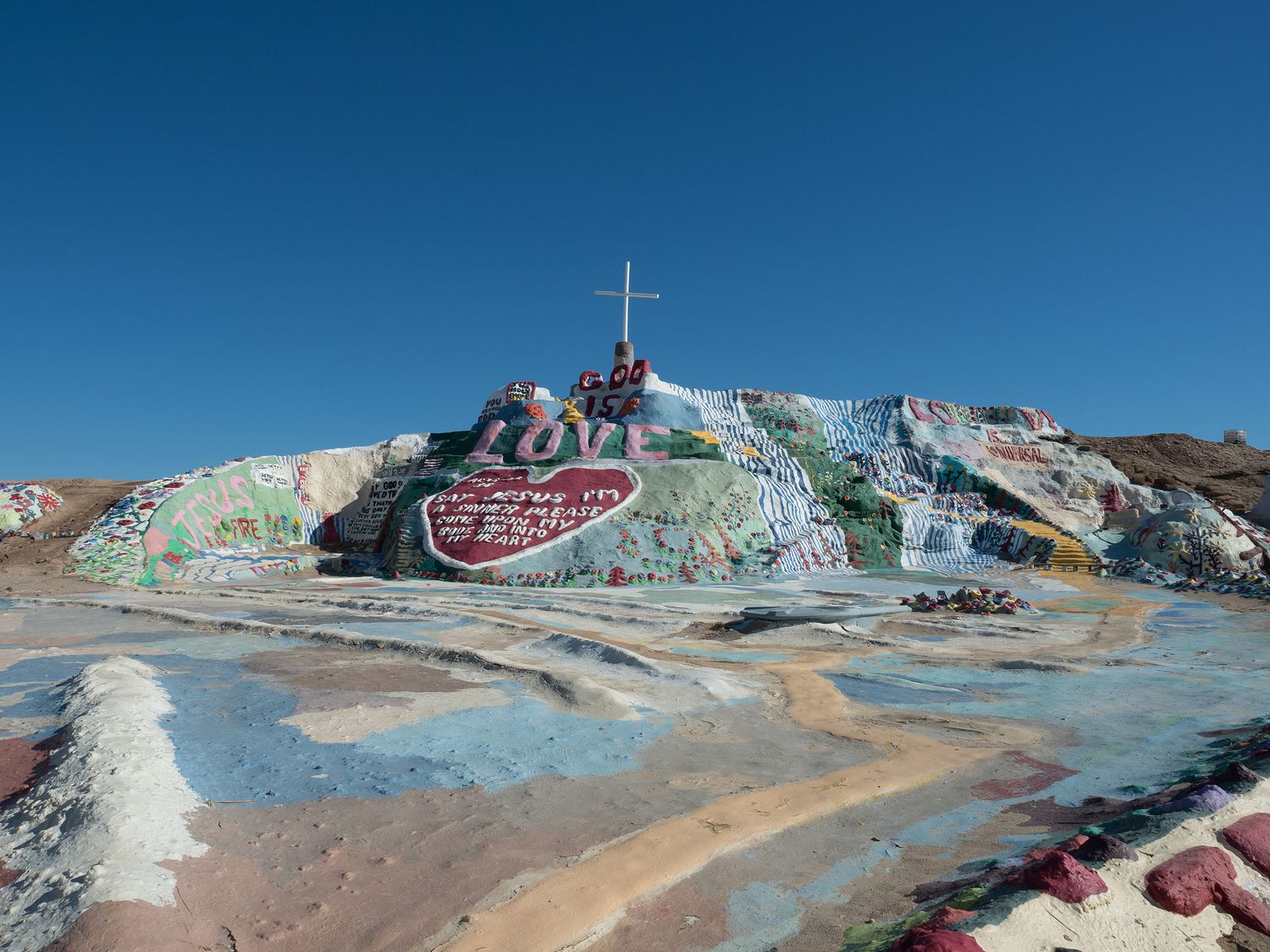
From the Salton Sea, we continued just a few miles down the road to Salvation Mountain. I almost feel like a tour guide, because all of these stops really need an explanation, for both my readers and my parents, so hang in there once again as I delve into a little bit of research to explain our next sight.
Salvation Mountain is a very large folk art creation, made of straw, adobe, and a great deal of paint. It was originally built by Leonard Knight, I believe in the 90s, although he created an earlier version in the 80s that collapsed before he began this one. The central focus of the art is the Sinner’s Prayer, which I’m not even going to begin to try to explain. Feel free to google, if that sort of thing interests you. It’s easier for me to say that it is an artwork that focuses on the Christian religion. As you can see from above, the biggest words on the thing say, “God is Love.”
Leonard Knight has since died, and a non-profit organization has formed with the goal of preserving the artwork. As you can imagine, paint fades in the hot desert sun, and straw and adobe are not incredibly long-lasting building materials. Visitors are encouraged to donate paint to the project to help with upkeep. People know about it these days because it, and the nearby Slab City, were featured in that terrible (no, no, tell us how you really feel, Kristy) movie “Into the Wild.” We won’t discuss it, but I hate it with the passion of someone who lost 148 minutes of her life to the pointless, idiotic thing. I’m not cut out for art films.
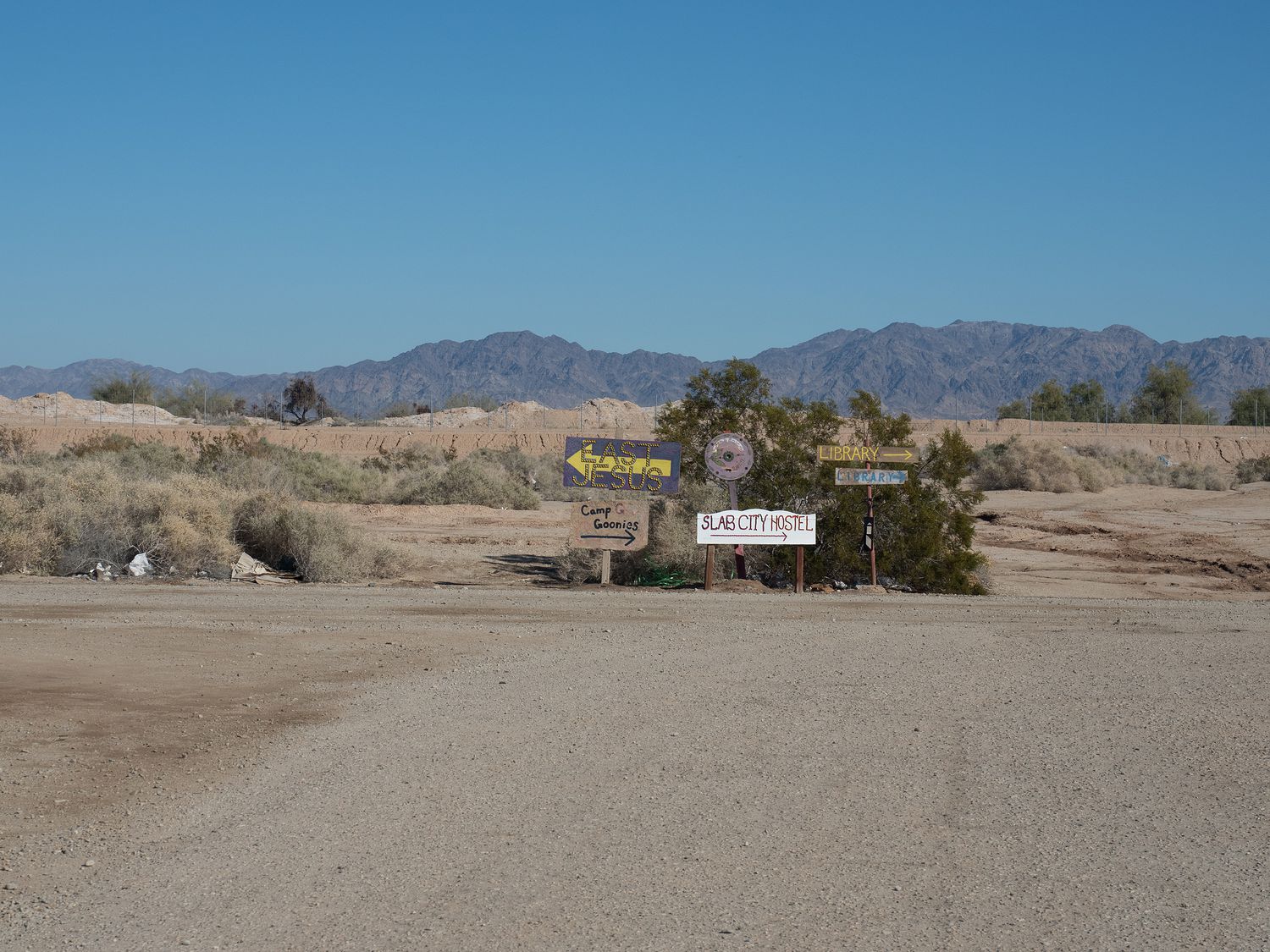
So now you must be wondering, what’s Slab City? I’m assuming, of course, that you didn’t waste any of your life on “Into the Wild.” Slab City is where Leonard Knight lived while he built his folk art. It is a community of squatters and snowbirds living in the middle of the Sonoran Desert on what used to be a Marine Corps barracks in World War II. There’s no charge for staying, and no one makes them pay taxes on their property, so they sort of hover in legal limbo.
The area has no electricity, water, sewers, toilets or trash pickup service. Only about 150 people live there year round, since the snowbirds leave for the summer, when temperatures rise to over 120ºF. It’s an interesting sort of place. Don’t drive all the way out there just to see it, for sure, but if you happen past, it is worth a look. It’s mostly what you would expect, with a few exceptions. It has a music venue and a library, among other things. I couldn’t do it, but to each their own, I suppose.
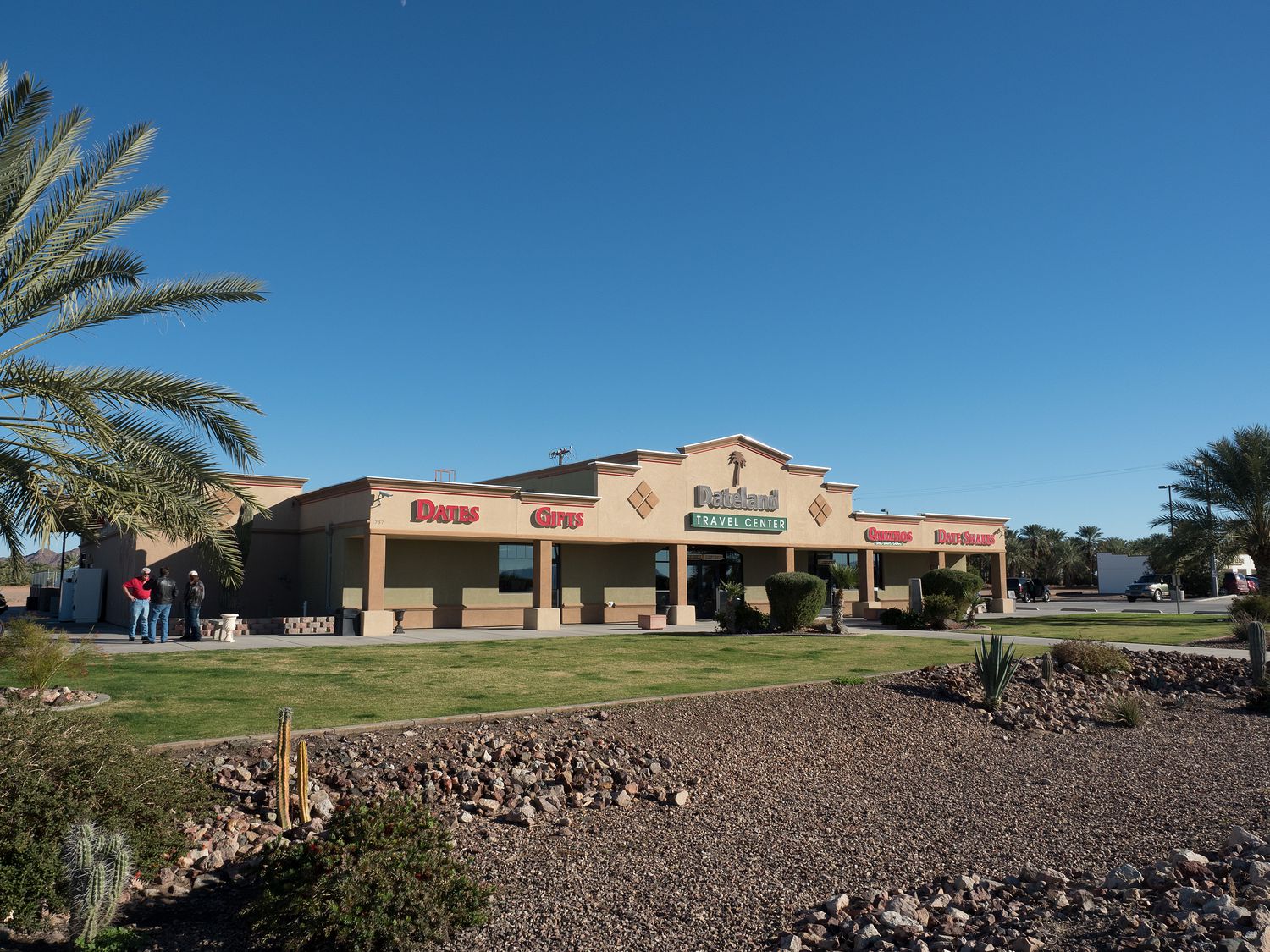
My parents seemed to enjoy the Salton Sea, but Salvation Mountain less so, which is about what I expected. The worst thing about the Salton Sea is that it stinks. The worst thing about Salvation Mountain is that it seems totally, unequivocally insane. My mom found Slab City interesting, as it’s basically the only place of its kind that we will ever see. It isn’t often that you come across an entire community of people living of the grid that way.
We stopped in Yuma for lunch. Mark and I had Pita Pit, and my parents had In-and-Out Burger. They were not impressed, and I can’t say I blame them. I gather that their burgers were fine, but the french fries. which Mark and I both tried too, were terrible. They tasted worse than the frozen fries that we’d had in Stovepipe Wells the other night: no better than the stuff you can get from the frozen aisles in the grocery store. I hope that wasn’t their A game, because if so, I can’t imagine why people line up around the block when we get new ones in Texas. Denton is getting one soon, I hear. I guess we will have to convince them to try it again. Our pitas were delightful, if you were curious.
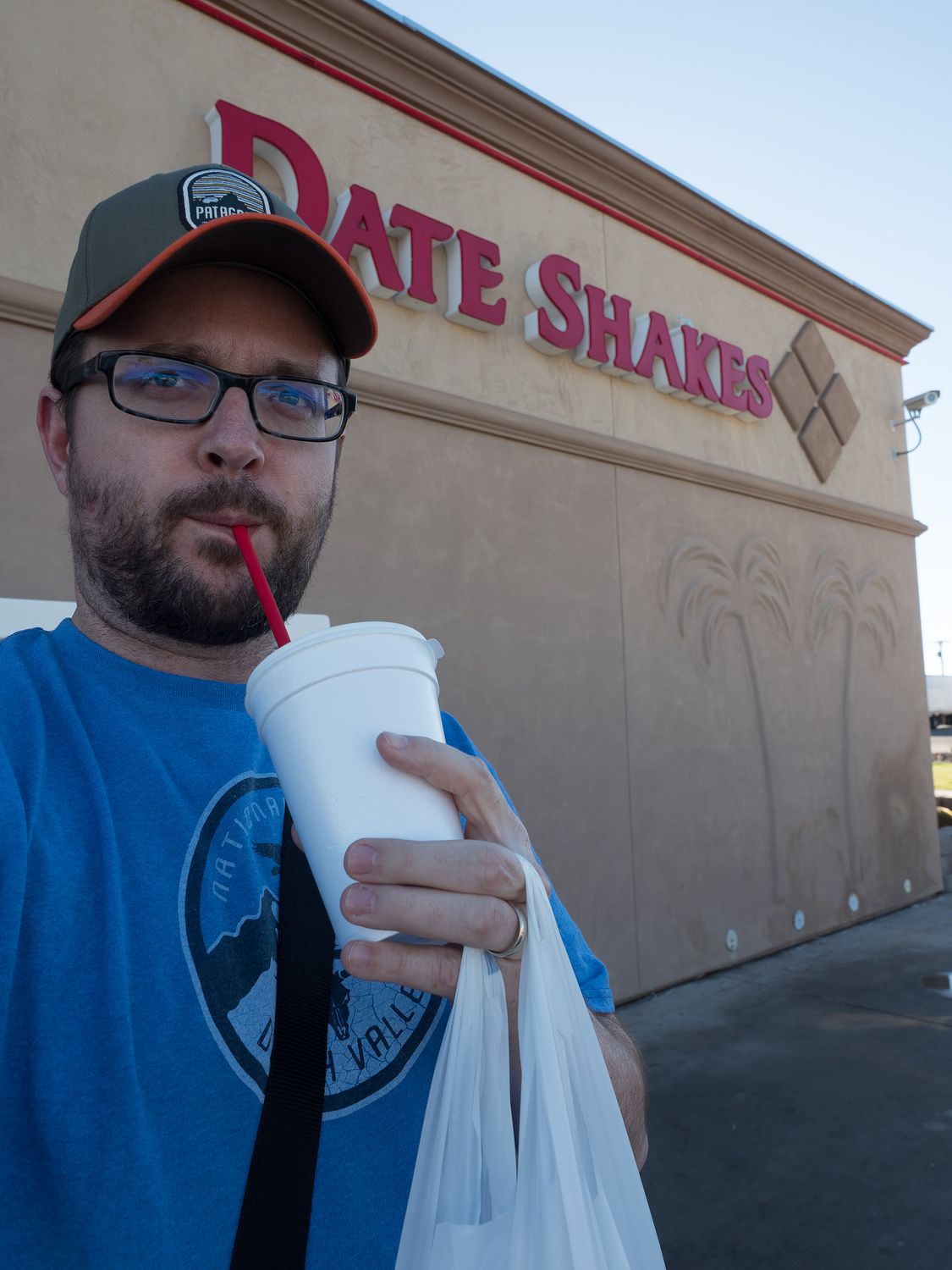
From Yuma, it’s an hour to Dateland, half of Mark’s plan for this trip, I think. They make a date shake that we had once the last time we visited Death Valley, and he has remembered it fondly ever since, and dreamed of having another. He would randomly mention just picking up and driving to Dateland occasionally on Friday nights, hoping I might be willing to make a weekend of it. That’s a long way to drive for just an ice cream, so I never gave in. I did get him one on this trip though, and he was so excited all day on the way there.
Have you ever had a date? They’re a bit like a giant, chewy raisin. They don’t taste bad at all. In fact, they have a mild, pleasant flavor. I simply can’t get over the texture. It’s just too chewy, and with that giant pit in the center? Feh. Date palms, on which the dates grow, are native to Iraq and the surrounding areas, but they grow well in the Arizona desert, it seems. They’ve been around forever, and are a staple in the Middle Eastern Diet, especially in desserts. The Fossil Record shows that Date Palms have been around for at least 50 million years, and Dateland has been around since the 1920s. If you’re curious about how the trees grow, Dateland’s website is an interesting read. I enjoyed it, at any rate.
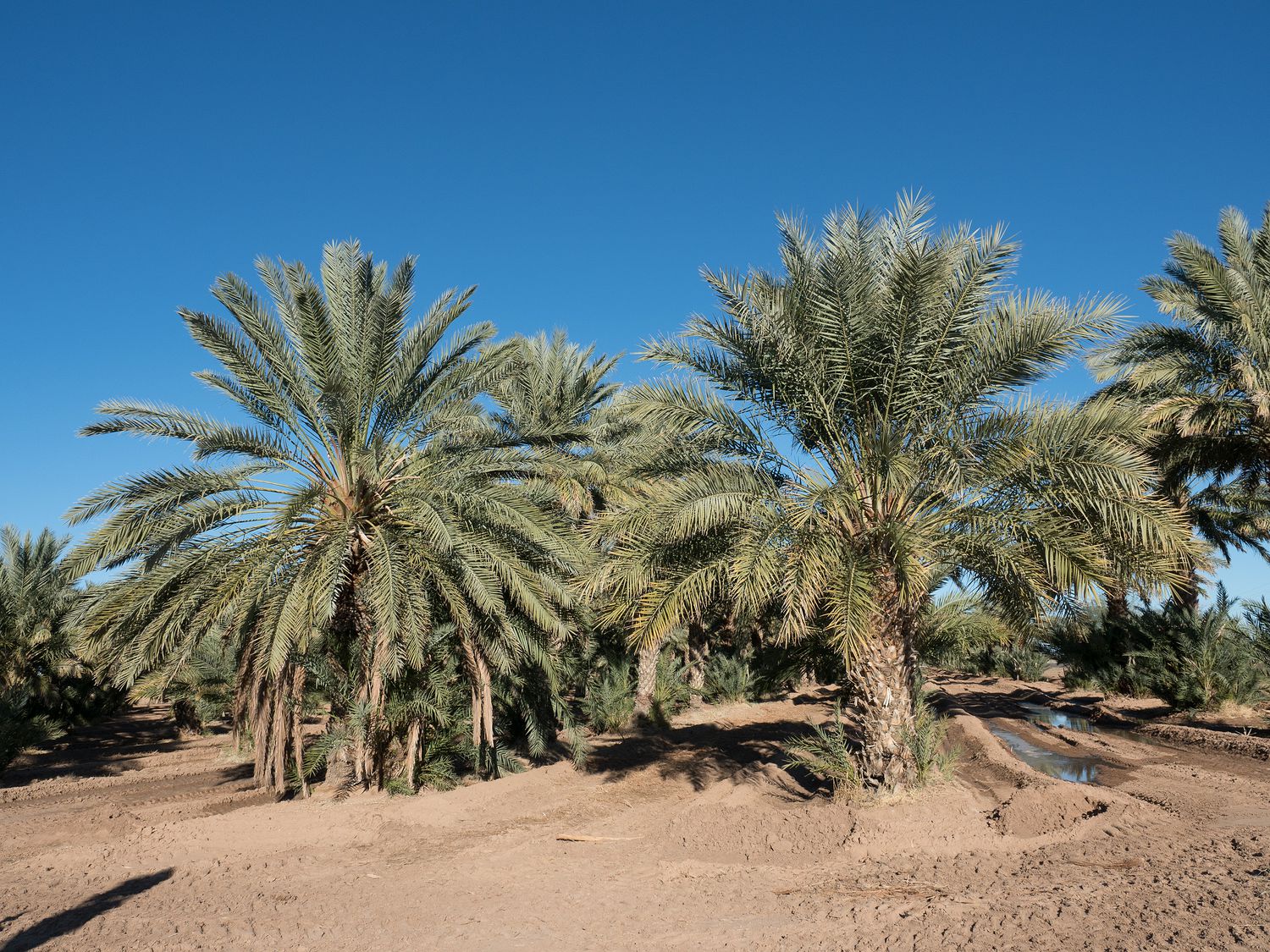
From Dateland, it didn’t take us too long to get to Tucson, about 2.5 hours. We checked into our hotel after our long day of exploring and wandered back behind our hotel for dinner at a Corner Bakery. It’s not particularly adventurous, but it was good and simple. Mark and I had cups of soup and half a sandwich, and my parents had macaroni. Mom had some potato soup too. We won’t question her dietary choices here. We are in a La Quinta once again tonight, which we’ve missed. The are always exactly what you expect, and always take pets. It’s perfect.
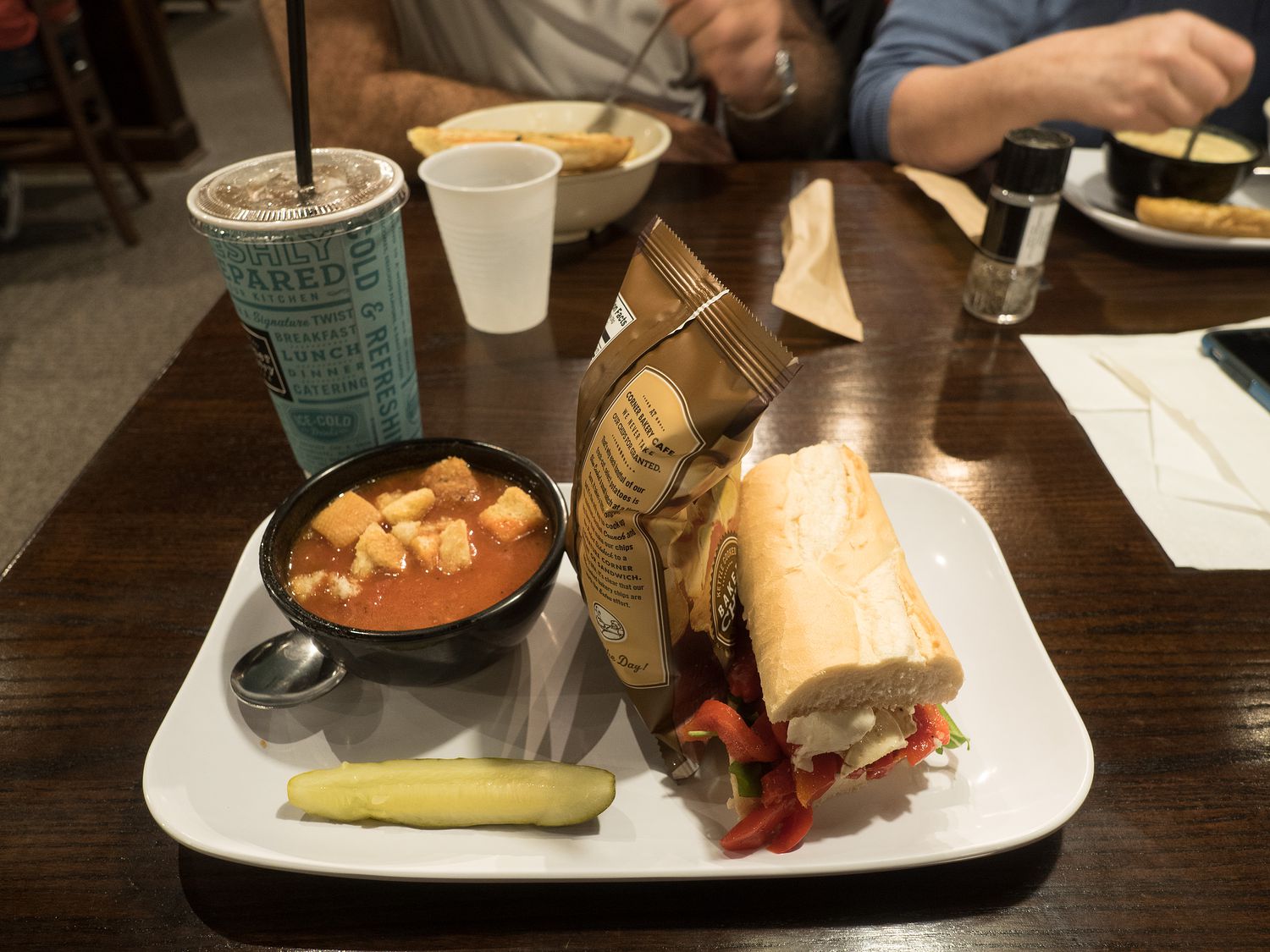
Tomorrow we are off to Carlsbad with a stop at Saguaro National Park and White Sands National Monument. I don’t think much that’s interesting will happen in between. Mark’s got a nice spot picked out for us to go for a run in the morning. We’re getting up at 6am so we can have an early start.
– Trip Total : 2,767 miles –
